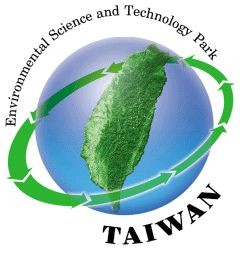Green growth triggered by Environmental Science and Technology Parks in Taiwan
To sustain its industrial growth and in line with the environmental trend of the world, Taiwan has been actively constructing and integrating Environmental Science and Technology Parks (ESTPs), expected to trigger the growth of green industry, initiate a recycle-based society and develop a globe-oriented environmental market.

The challenge
With the tendency of zero waste, energy-saving and carbon footprint reduction, some countries have been actively building and promoting eco-industrial parks for the past two decades, expecting to fully balance both the economic development and sustainable environment dimensions. Taiwan didn’t stay out of it: the ESTPs in Taiwan were established in order to keep up with such a global tendency.
The measure
Taiwan Environmental Protection Administration (EPA) established 4 ESTPs, located in Kaohsiung (launched in June 2006 and counting now 36 manufacturers), Hualien (launched in October 2008, 25 manufacturers), Taoyuan (launched in April 2009, 21 manufacturers), and Tainan (started in May 2008, 21 manufacturers).
The purpose of promoting the ESTP is to place them as a network, integrating energy production via strategic planning, production scheduling and eco-manufacturing. The efforts will result in waste reduction, improvement of the level of domestic environmental protection technology and of the industry involved, and a reactivation of the idle lands of the industrial areas. Presently, it has provided the essential benefit of raising the proportion of renewable resources, reducing the emissions of GHG at the rate of 0.6% every year from 2008, driving the local industries to go green, using urban mining technology and supporting a low carbon society development policy. Industries with the following characteristics are entitled to move into ESTPs:
cleaner production technologywaste resource recovery and conversion into new productsemerging and strategic environmental technologiesproduction of equipment and system of renewable energysolutions for key aspects of environmental protectionThe government provided support to business by investing about 1.55 billion Euro to set up the 4 ESTPs amid a total area of 123 hectares. ESTPs put an emphasis on the measures of ecological infrastructures. In order to reach the goal of zero emission, they have set resource recycling systems, sewage treatment equipment with high efficiency, storage systems for wastewater recycling and reusing, and clean energy like solar power, wind power and so forth.
Lessons learnt
From the ESTP setup in 2002, 100 manufacturers were approved to move into the parks. Within ten years, the total investment amount reached 4.8 billion Euro, and the total annual output was estimated 8.73 billion Euro. This also had created 2,876 employment opportunities, and 2.72 million metric tons of materials had been recycled and reutilized. The major barrier for prospective manufacturers was the lack of sufficient funding. In order to attract top-notch environmental protection companies and green industries, to encourage the R&D of green technology and the production of environmental friendly products, Taiwan set up schemes providing incentives such as land rents, production, and R&D subsidies.
Further deployment
So far, the achievements of the developing environmental protection industry and resource recycling are considerably significant. Between year 2002 and 2011, the first milestone was reached, and all regional governments continued their efforts towards the next milestone: keep assisting more industries with more cooperative opportunities. EPA and all regional governments supported this work through the dissemination of information and via promotional campaigns. ESTPs in Taiwan are estimated to be level 7 on the GML scale, for the concept was implemented at full-scale.
Links
BrochureThe promotional status and achievement of ESTP, Taiwan (language: Chinese)The Environmental Science and Technology Parks in Taiwan
